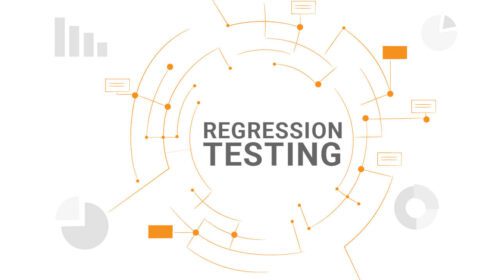Struggling to make a profit in the Forex trading market? That’s the story of every other trader, so you are not alone. It is one of the most complex markets to get your head around, but it is still predicted to stay strong in the future. However, with the right set of tools and indicators, anyone with an understanding of technical analysis can begin to reap the rewards.
In this blog, we will explore some of the fundamental Forex indicators that every trader should learn – giving you insights into potential opportunities and helping you navigate this volatile market.
Keep reading to learn more.
Top 7 Forex Indicators That Every Trader Should Know
Forex trading is a lucrative and exciting venture that requires a combination of technical analysis, market understanding, and a sharp instinct. However, with so many indicators and metrics, it can be challenging to determine the most reliable and practical tools.
Let’s introduce you to the top 7 forex indicators that every trader should know to help you make informed and confident trading decisions.
1. Moving Averages
If you’re looking for success in Forex trading, one essential indicator is the moving average. A moving average takes the average of a series of data points over a given period, helping traders identify trends and support/resistance levels. They provide a simple representation of market trends by plotting the average price of a currency pair over a specified time frame.
Using this indicator, it’s possible to quickly gain insight into when to buy or sell to get optimal results from any given trade. This indicator offers excellent flexibility as you can customize the length of your lookback window when calculating averages – allowing you to tailor your methods as needed.
For example, reducing your lookback window would provide more accuracy if you want more detailed information about short-term fluctuations.
Moving averages are a fantastic tool and a must-know indicator for anyone starting Forex trading.
2. Relative Strength Index (RSI)
When it comes to Forex trading, having a reliable indicator can often be the difference between success and failure. One of the most popular indicators used by traders is the Relative Strength Index (RSI).
The Relative Strength Index (RSI) is a momentum oscillator that compares the magnitude of recent gains to recent losses to determine overbought or oversold conditions.
This tool was developed in 1978 by J. Welles Wilder Jr. and has remained a key indicator ever since. The RSI measures the magnitude of recent price changes to help determine overbought and oversold levels in price/time intervals, which can give traders a head’s up on trends.
When combined with other fundamental analysis tools, the RSI can be an invaluable resource for any trader looking to achieve consistent success in the market.
3. Bollinger Bands
Bollinger Bands are a volatility indicator that consists of three lines plotted on a chart. The center line is a simple moving average, while the upper and lower bands are plotted two standard deviations away from the moving average.
Bollinger Bands provide valuable insights into market volatility, trend direction, and potential price breakouts.
4. Fibonacci Retracements
Fibonacci Retracements are a popular technical analysis tool that uses horizontal lines to identify potential support and resistance levels. Traders use Fibonacci Retracements to identify potential areas where a currency pair may see support or resistance and then enter or exit trades accordingly.
By plotting Fibonacci levels on a chart, traders can gain insight into possible market movements and adjust their strategy based on this information.
Fibonacci Retracements can be utilized successfully in range-bound markets and strong trends alike. They also help provide an extra layer of protection by assisting traders in minimizing their risk and maximizing their profits.
5. Stochastic Oscillator
The Stochastic Oscillator is one of the most valuable indicators for any Forex trader. It provides invaluable insight into the market, allowing traders to spot potential buy and sell opportunities at a glance.
This Forex indicator is essentially an oscillator that measures momentum by comparing a security’s closing price over a given period to its price range over the same period. Regarding trading, knowledge is power, and this indicator will give you an invaluable edge.
Understanding how to read and interpret the metrics provided by the Stochastic Oscillator can help you to shape your strategies and take your trading skill set to the next level.
6. MACD (Moving Average Convergence Divergence)
The MACD (Moving Average Convergence Divergence) is a trend-following momentum indicator that plots the difference between two moving averages on a chart. The MACD line, signal line, and histogram provide valuable insights into trend direction, momentum, and potential reversals.
It is a fast and reliable way to gain insights into market trends that help you stay ahead of your competitors and make better trading decisions. The MACD is one of the most popular indicators among experienced traders
7. Parabolic SAR
The Parabolic SAR is a trend-following indicator that plots points on a chart to indicate potential reversals. This technical indicator is designed to indicate trend direction and clearly show when to buy or sell. It is especially helpful in identifying entry and exit points and tracking price consolidation patterns.
Parabolic SAR has a straightforward interpretation – buy shares when the trend lines move below prices and sell when they move above them. It can also help you identify stops and take profits more quickly. A
Conclusion
In conclusion, mastering these seven forex indicators can provide a significant advantage in navigating the forex market.
By combining technical analysis with market understanding, these tools can help you make informed and confident trading decisions.
Those looking to enhance their knowledge and skills in forex trading should consider taking a Forex Trading Training in Dubai or Abu Dhabi. Such courses provide comprehensive information on the most important Forex indicators and strategies, enabling traders to make successful trading decisions while mitigating risks. Remember, no single indicator is guaranteed to produce profits, but by understanding these top 7 forex indicators, you can gain a deeper understanding of the market and develop your own unique trading style.



